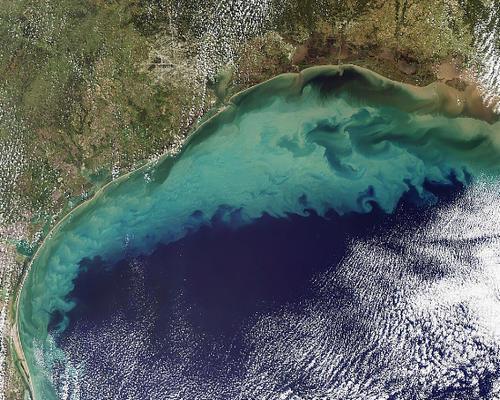Beryllium in marine clay minerals
Gulf of Mexico
Image Credit: NASA Earth Observatory CC-BY
Clay minerals can form on land through the chemical decomposition of rock-forming minerals, but clays can also form in the ocean. The formation of clays in the ocean releases CO2, which has an impact on the global climate. Despite the importance of this phenomenon for the long-term evolution of ocean chemistry and atmospheric CO2 concentration, there is yet no method that can easily measure the amount of clay minerals formed in the ocean. In this study, we investigate whether the element beryllium can be used to quantify the formation of these newly formed clays.
The data
The dataset contains concentrations of major elements such as magnesium and iron, minor elements such as beryllium, neodymium and samarium, and neodymium, beryllium and strontium isotope ratios. In addition, X-ray diffraction data are available. The element concentrations were weighted for the evaluation and normalised against titanium (Ti).
Publication of the data set: Bernhardt A, Oelze M et al (2020) https://doi.org/10.5880/fidgeo.2020.009
Research results
Two isotopes of the element beryllium (Be) with atomic masses 9 and 10 were used to test whether this isotope system can be used to measure clay formation in the ocean. The abundance of these isotopes is very different on land and in the sea. Beryllium isotopes were measured in river sediments and seabed sediments off the Chilean coast and the ratio of the isotopes (10Be/9Be) was compared. The ratio is four times higher in marine sediments than in river sediments.
This increase is interpreted as a consequence of the formation of clay minerals in the ocean, which include the high oceanic 10Be/9Be ratio in their formation. The authors of the study conclude that the beryllium isotope system can be used to measure the formation of even very small amounts (less than 2%) of marine clay minerals. This is important because the clay-forming chemical reactions release CO2, which has a long-term impact on the global climate.
Publication of the journal article: Bernhardt A, Oelze M et al (2020) https://doi.org/10.1029/2019GL086061
Texts modified after: Bernhardt A, Oelze M et al (2020) https://doi.org/10.1029/2019GL086061
